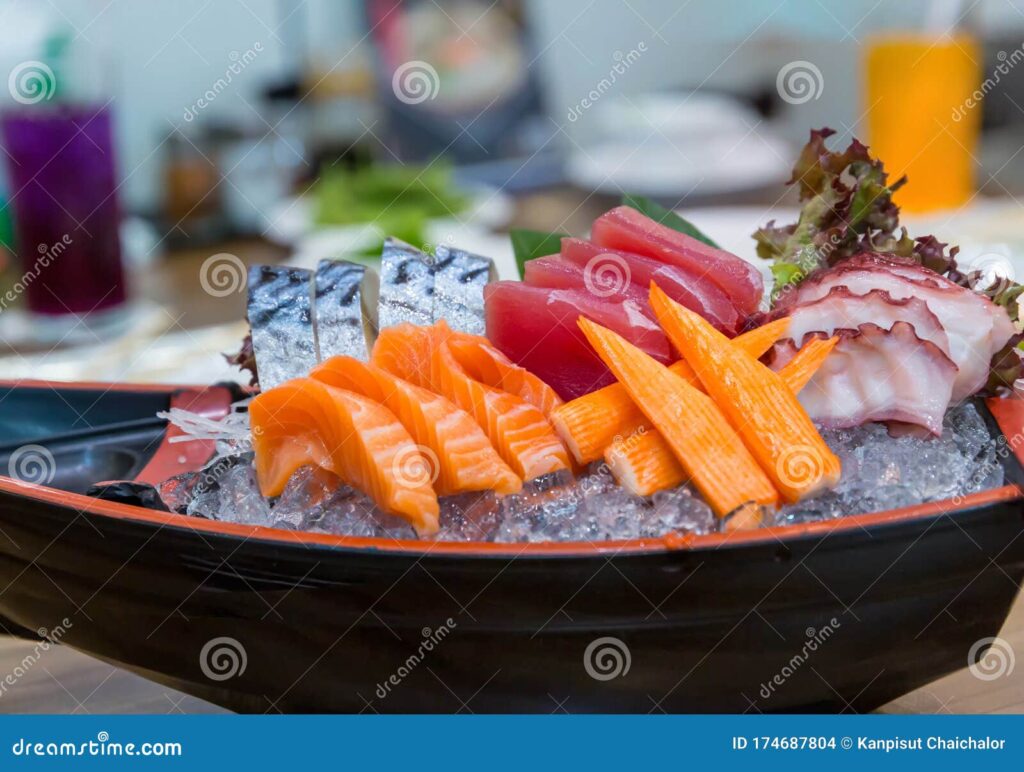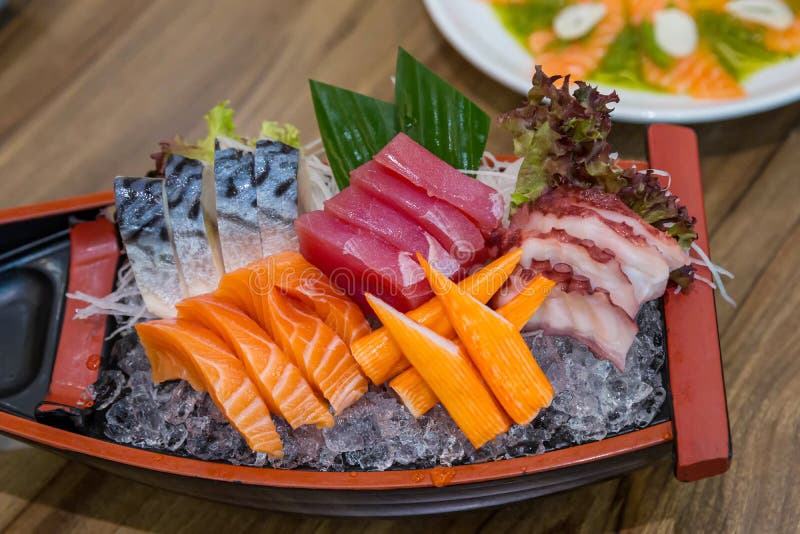Sashimi, the art of enjoying raw fish, is a cornerstone of Japanese cuisine. It’s not just about eating raw fish; it’s about experiencing the delicate flavors, textures, and the chef’s masterful knife skills. The beauty of fresh Japanese sashimi lies in its simplicity, requiring only the freshest, highest-quality fish and a few key accompaniments. This guide will walk you through everything you need to know to prepare and enjoy sashimi at home, from selecting the right fish to mastering the art of slicing and presentation. Whether you’re a seasoned sushi enthusiast or a complete beginner, this recipe will empower you to create a stunning and authentic sashimi experience. The key to exceptional fresh Japanese sashimi is in the quality of the ingredients and the care taken in preparation.



Recipe Overview
| Category | Value |
|---|---|
| Preparation Time | 20 minutes |
| Chilling Time | 30 minutes (optional) |
| Servings | 2 servings |
| Difficulty | Easy |
Nutrition per Serving (approximate)
Please note that the nutritional content will vary based on the type of fish used. This is a general estimate.
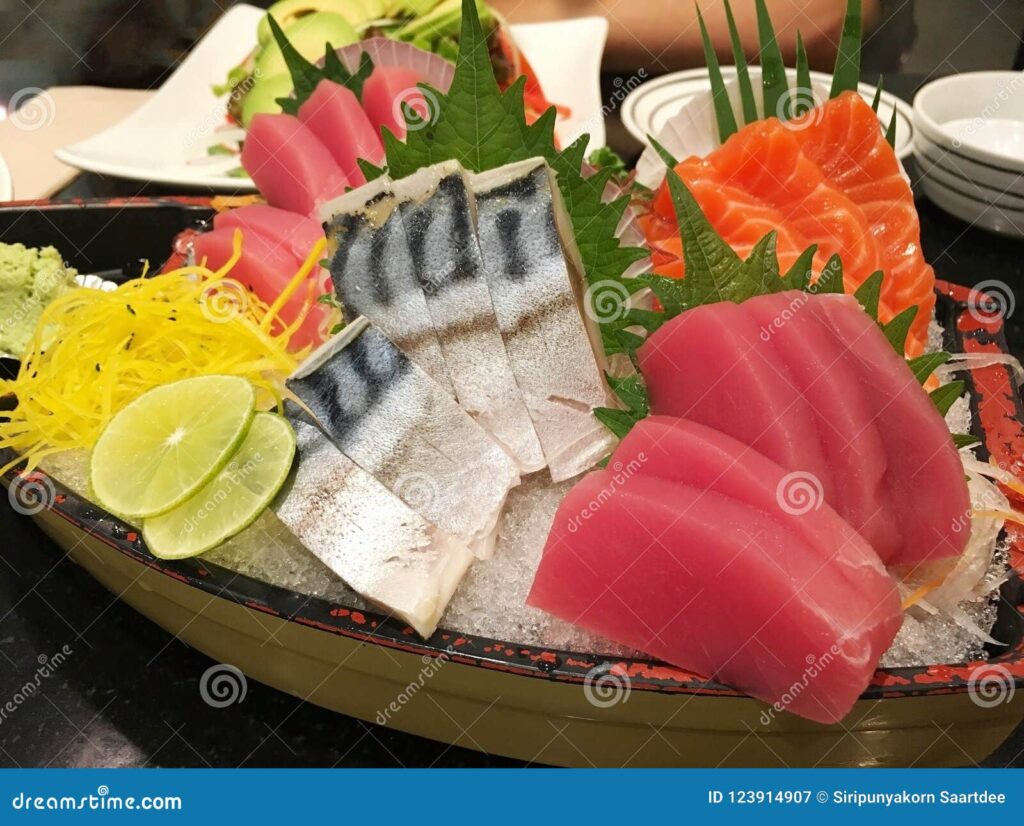
| Nutrient | Amount |
|---|---|
| Calories | 200-300 |
| Protein | 30-40g |
| Fat | 5-15g (depending on the fish) |
| Carbohydrates | 0g |
Ingredients
| Ingredient | Quantity | Notes |
|---|---|---|
| Sushi-Grade Fish (Salmon, Tuna, Yellowtail, etc.) | 4-6 oz total | Choose your favorite, or a variety! VERY IMPORTANT that it is sushi grade, handled appropriately, and sourced from a trusted vendor. |
| Soy Sauce | To taste | Use a high-quality Japanese soy sauce. Low sodium is an option. |
| Wasabi | To taste | Freshly grated wasabi is ideal, but tube wasabi is acceptable. |
| Pickled Ginger (Gari) | To taste | Used to cleanse the palate between different types of fish. |
| Daikon Radish (optional) | Small amount for garnish | Adds a refreshing crunch. |
| Shiso Leaves (optional) | A few leaves for garnish | Adds a unique, slightly minty flavor. |
| Lemon or Lime Wedges (optional) | 1-2 wedges | For a touch of acidity. |
Cooking Instructions
- Source High-Quality Sushi-Grade Fish: This is the most crucial step. Ensure that the fish you purchase is specifically labeled as “sushi-grade” or “sashimi-grade” and comes from a reputable fishmonger or supplier who understands proper handling and storage procedures to prevent bacterial contamination. Ask them questions about the fish’s origin and handling processes. Freshness is paramount when dealing with raw fish, especially when making fresh Japanese sashimi.
- Prepare Your Workspace: Before you even touch the fish, ensure your workspace is impeccably clean. Sanitize your cutting board, knife, and any other tools you’ll be using. This minimizes the risk of cross-contamination and ensures the safety of your fresh Japanese sashimi. Use separate cutting boards for fish, vegetables, and meats.
- Chill the Fish (Optional): While not always necessary, chilling the fish for about 30 minutes before slicing can make it easier to handle and slice cleanly. The colder temperature firms up the flesh, resulting in more precise cuts for your fresh Japanese sashimi. Wrap the fish tightly in plastic wrap before placing it in the refrigerator.
- Sharpen Your Knife: A dull knife is your enemy when preparing fresh Japanese sashimi. Use a whetstone or knife sharpener to ensure your knife is razor-sharp. A sharp knife allows you to slice the fish with minimal pressure, preventing tearing and bruising. Practice your sharpening technique if you are new to this.
- Slicing the Fish: The slicing technique depends on the type of fish. Generally, you’ll want to slice against the grain of the muscle fibers to create tender pieces. Aim for slices that are about ¼ inch thick. For tuna and salmon, use a long, smooth stroke. For yellowtail, you can use a slightly angled cut. The key is to apply even pressure and let the knife do the work. Watch videos of professional sushi chefs for visual guidance on slicing fresh Japanese sashimi.
- Presentation is Key: Sashimi is as much about the visual experience as it is about the taste. Arrange the slices artfully on a plate. Consider using a variety of colors and textures. Daikon radish, shiso leaves, and edible flowers can add visual appeal to your fresh Japanese sashimi.
- Prepare Your Accompaniments: Place small portions of soy sauce, wasabi, and pickled ginger on the plate or in small dishes. Offer lemon or lime wedges for those who prefer a touch of acidity with their fresh Japanese sashimi.
- Serve Immediately: Sashimi is best enjoyed immediately after preparation. This ensures the freshest flavor and texture. Do not let it sit out at room temperature for extended periods.
Serving Suggestions
Fresh Japanese sashimi is typically served as an appetizer or a light meal. It is often enjoyed with sake or Japanese beer. The clean, delicate flavors of the fish pair well with the subtle sweetness of sake. For a more substantial meal, serve sashimi with a side of miso soup and rice. Fresh Japanese sashimi can also be incorporated into more elaborate sushi platters or bento boxes. Get creative and experiment with different accompaniments and presentations.
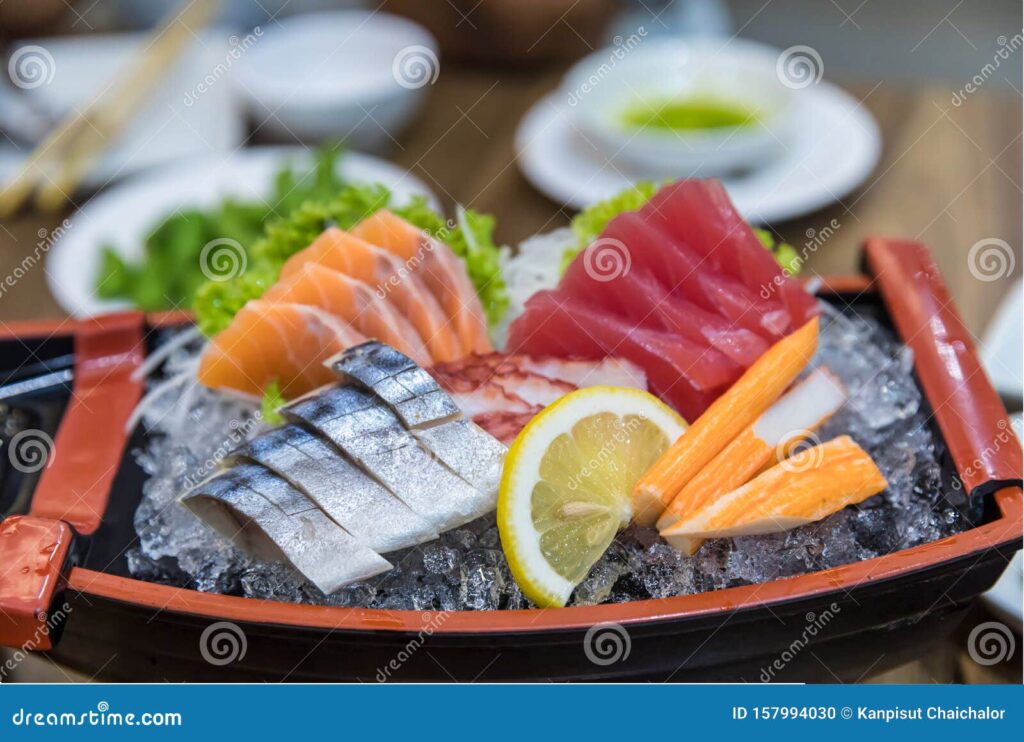
Notes and Tips
- Safety First: Always prioritize food safety when preparing fresh Japanese sashimi. Use only sushi-grade fish from a trusted source. Keep your workspace clean and sanitized. Wash your hands thoroughly before and after handling the fish.
- Don’t Overdo the Wasabi: Wasabi is potent. Start with a small amount and add more to taste. Too much wasabi can overwhelm the delicate flavor of the fish.
- Use Fresh Wasabi if Possible: Freshly grated wasabi has a more complex and nuanced flavor than the tube variety.
- Pairing Soy Sauce: Lightly dip the fish into the soy sauce. Avoid soaking it, as this can overpower the flavor of the fish. High-quality soy sauce enhances the flavor of fresh Japanese sashimi.
- Experiment with Fish Types: Don’t be afraid to try different types of sushi-grade fish. Salmon, tuna, yellowtail, and sea bream are all popular choices for fresh Japanese sashimi.
- Mastering the Slice: Slicing sashimi takes practice. Don’t be discouraged if your first few attempts aren’t perfect. With time and patience, you’ll develop the skill and confidence to create beautiful and delicious sashimi.
- Garnish Wisely: Garnishes should complement the flavor of the fish, not mask it. Use them sparingly and thoughtfully to enhance the visual appeal of your fresh Japanese sashimi.
- Enjoy the Experience: Preparing and enjoying sashimi is a mindful and rewarding experience. Take your time, savor the flavors, and appreciate the artistry of Japanese cuisine. The essence of fresh Japanese sashimi is simplicity and quality.
- Consider the Source: Understand where your fish comes from and how it was handled. Sustainable seafood choices are not only better for the environment but often result in a superior product.
- Ask Your Fishmonger: Don’t hesitate to ask your fishmonger for advice. They can provide valuable insights into the best types of fish available and offer tips on preparation.
By following these guidelines, you can confidently create and enjoy fresh Japanese sashimi in the comfort of your own home. The key to success lies in using high-quality ingredients, mastering the slicing technique, and paying attention to detail. With a little practice, you’ll be able to impress your friends and family with your newfound culinary skills and appreciation for this exquisite Japanese delicacy. Remember, the beauty of fresh Japanese sashimi lies in its simplicity, allowing the natural flavors of the fish to shine through. So, embrace the challenge, experiment with different flavors and presentations, and most importantly, enjoy the experience of creating this iconic dish.
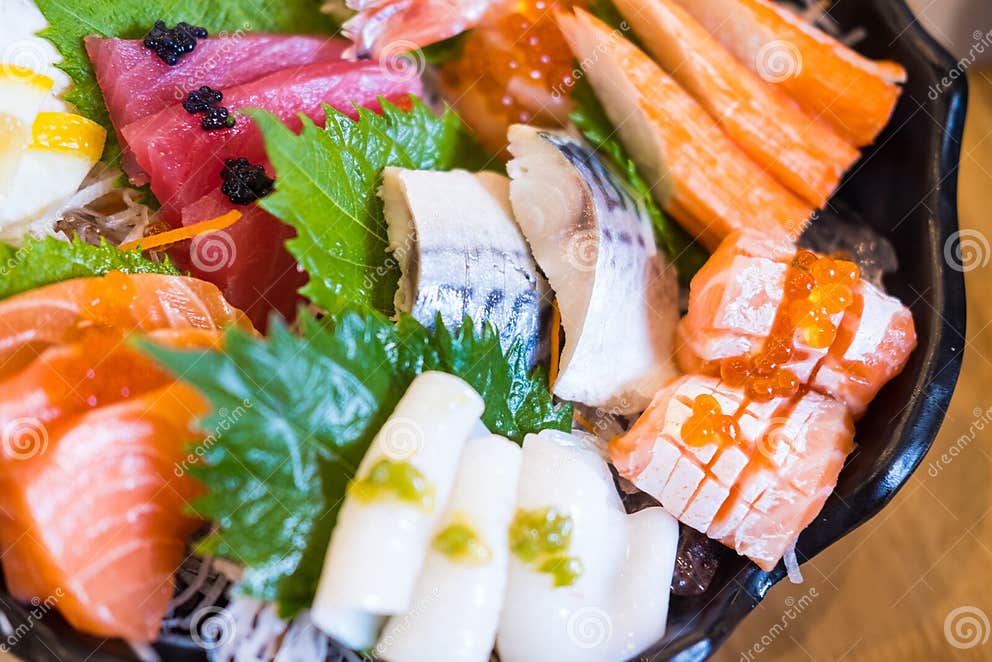
The journey into making fresh Japanese sashimi can seem daunting at first, but with a little guidance and practice, it becomes an accessible and rewarding culinary experience. The selection of fresh, high-quality ingredients is paramount, ensuring both the safety and the delightful flavors of the dish. Mastering the art of slicing the raw fish, as we discussed, is key to achieving the right texture and enhancing the overall dining experience. And while the actual cooking process is minimal, the preparation and presentation add to the dish’s appeal.

As we conclude, remember that fresh Japanese sashimi is more than just raw fish; it’s a cultural experience, a culinary art form, and a celebration of the ocean’s bounty. Whether you’re preparing it for a special occasion or simply indulging in a quiet night in, each slice of sashimi tells a story of tradition, precision, and the pursuit of culinary excellence. With this guide, you’re well-equipped to embark on your sashimi-making adventure, bringing a taste of Japan to your table. Enjoy the process, savor the flavors, and share the experience with those you love.
